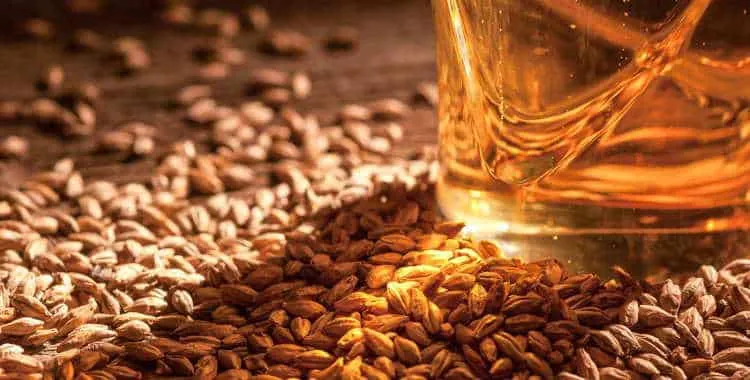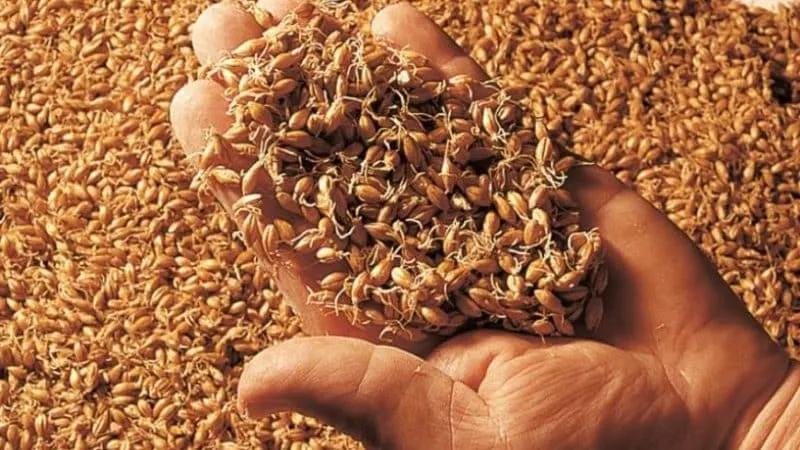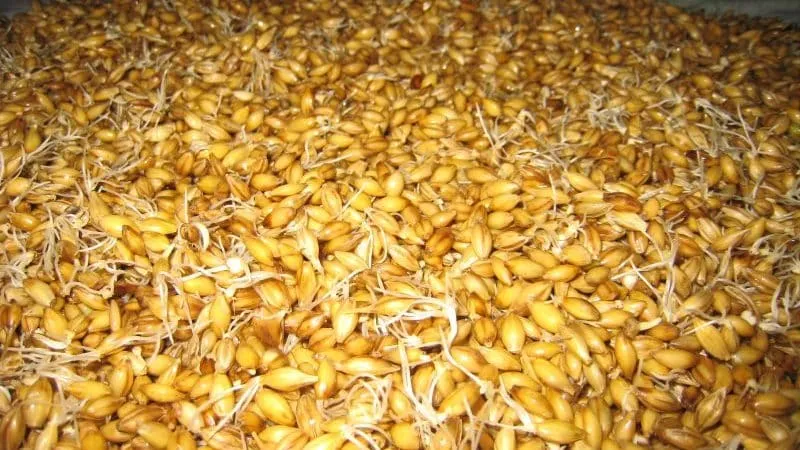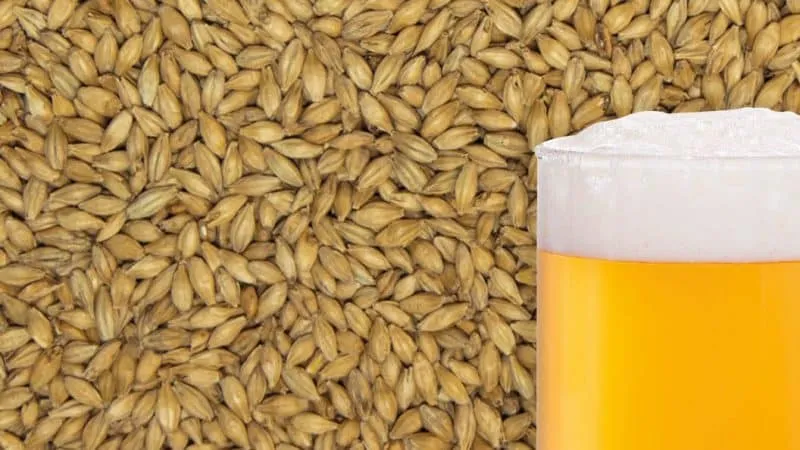While the harmful effects of alcohol are widely discussed, festive tables across Europe are rarely complete without a selection of drinks. Medical professionals acknowledge that alcohol in small doses can even have benefits. However, finding high-quality products can be challenging—even expensive beverages with bright labels from well-known brands are often counterfeit.
As a result, many enthusiasts prefer making their own alcoholic beverages at home. The law permits the production of alcohol for personal use, and the options extend beyond strong homemade spirits like whisky—homebrewed beer is also a popular choice. When brewing beer, the question of sourcing malt inevitably arises. Barley malt can easily be prepared at home.
Table of contents
What Is Malt?
The fermentation process, essential for producing any alcoholic beverage, occurs when yeast interacts with sugar. This principle has long been used in preparing mash, which is then distilled to create homemade spirits.
Using pure sugar makes this process expensive. A more economical alternative is starch from cereals, which also contains sugar compounds. However, these are complex polysaccharides that do not trigger fermentation. Homebrewers joke that yeast "can’t chew starch"—meaning the sugar enzymes are locked within other components.
To make starch fermentable, it must be broken down into simple sugars (monosaccharides). This is achieved by boiling grains with malt. This method is used both in home whisky production and industrial brewing.
Malt is essential in beer production. Beyond its role in the chemical process, it imparts distinct flavours that differentiate beer varieties based on the raw materials used.

Important! Malt is a powder derived from artificially sprouted cereal grains. It contains enzymes that break down polysaccharides into fermentable sugars. The term "malt" can also refer to the sprouted grains themselves.
While wheat, rye, oats, and even corn can be malted, barley malt is considered the highest quality, lending a unique taste and colour to beverages.
Malt is also widely used in breadmaking and kvass production. Light malt is used for white wheat bread, while dark malt enhances rye and black bread.
Advantages and Disadvantages of Barley Malt
Barley malt, also called light or white malt, offers several benefits in fermentation:
- Accessibility — grains or malt can be purchased easily across Europe;
- Cost-effectiveness compared to sugar;
- Easy storage;
- Barley malt gives beer its characteristic taste and aroma;
- A key ingredient in whisky production, especially strong blends using a mix of dark and light malt (e.g., wheat and barley);
- Due to its fine consistency, barley malt sieves faster and more efficiently than darker varieties.
However, barley malt also has drawbacks:
- If low-quality grain is used, mould may develop, ruining the taste and aroma of the final product;
- During storage, malt requires occasional aeration—otherwise, grains may develop an unpleasant cucumber-like odour.
Step-by-Step Malt Preparation

Malt quality depends on grain quality and sprouting time. Barley typically takes 9–10 days to sprout, while rye requires 5–6 days.
Grain Selection
Key characteristics to look for:
- Avoid freshly harvested grains—they have low germination rates;
- Ideal grain age for malting is 2–12 months;
- Grains should be fully ripe, indicated by a light-yellow hue and firm weight;
- Healthy barley grains are white and porous inside;
- When submerged in water, viable grains sink.
Test germination by wrapping 100 grains in a damp cloth and placing them on a plate. After 3 days, 90–92 grains should sprout—a 90% germination rate is considered acceptable.
Cleaning
Grain preparation involves:
- Sifting through a coarse sieve to remove debris, stones, and dirt;
- Using magnets to eliminate metal impurities;
- Rinsing grains multiple times in hot water;
- Continuing until rinse water runs clear.
Soaking
Soak grains in water for 6–8 hours. Alternatively, use a more thorough method: soak for 24 hours, changing water every 6 hours.
Properly soaked grains show slight sprouting, and their husks peel easily. Disinfect grains in a weak potassium permanganate solution if needed.
Sprouting
Procedure:
- Spread moist grains in a tray (layer no thicker than 5 cm);
- Cover with cotton cloth to retain moisture;
- Maintain temperature at ~15°C;
- Stir grains regularly.
Sprouting takes about a week. Barley sprouts should reach 1.5–2 times the grain length.
Malting Conditions
The water-free method was described above. An alternative is the "flooding" technique:
- Place grains in a perforated container (e.g., a double-sided sieve in a box);
- Water grains 2–5 times daily from different sides;
- Use warm water for faster sprouting, room-temperature water for natural pacing.
Frequent watering accelerates sprouting and removes harmful microbes.
With warm water, barley may sprout fully in 5 days; otherwise, it takes ~7 days.

Disinfection and Curing
Disinfect sprouts with diluted vodka, vinegar, or potassium permanganate solution.
Dry grains thoroughly—use an attic or a fan heater. Incomplete drying risks mould growth.
Important! If mould appears, discard affected grains; the rest remain usable.
Sprouts left in the malt cause bitterness. Remove them by:
- Blending grains in a mixer—sprouts detach first, then sieve;
- Shaking grains vigorously in a bag—similar effect.
Dry grains to 2–5% moisture, then grind into powder using a blender or coffee grinder.

Usage and Storage
Green (undried) malt must be ground and used immediately for brewing.
Mix green malt with water to create wort, then add additional grains (wheat/barley) and yeast. Combining malt from different cereals (e.g., barley and rye) enhances flavour and colour.
Whisky can be single-malt or blended—the latter is stronger but takes longer to produce.
Storage
For long-term storage, dry malt again.
Important! Drying temperature must not exceed 40°C, or enzymes will degrade.
Dried grains are harder to grind—use a grain mill instead of a coffee grinder.
Store powder in sealed glass jars in a cool, dry, dark place.
Tips and Recommendations
Key advice for homemade malt:
- Pale beverages can be darkened with rye malt blends;
- Green and dried malt yield different flavours;
- Higher-quality barley improves beer taste;
- Some enthusiasts sprout grains successfully in refrigerators;
- White liquid oozing from grains indicates over-sprouting—discard;
- Husks signal poor cleaning;
- Mouthwash can substitute for grain disinfectants.
Conclusion
Making barley malt at home is simpler than it seems. With patience and care, sprouting grains is straightforward. The real fun begins when crafting homemade beverages—where creativity takes centre stage.







